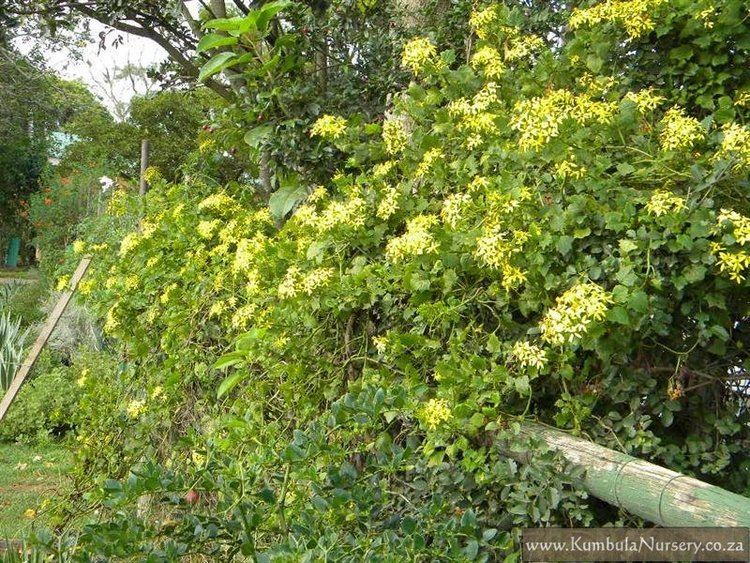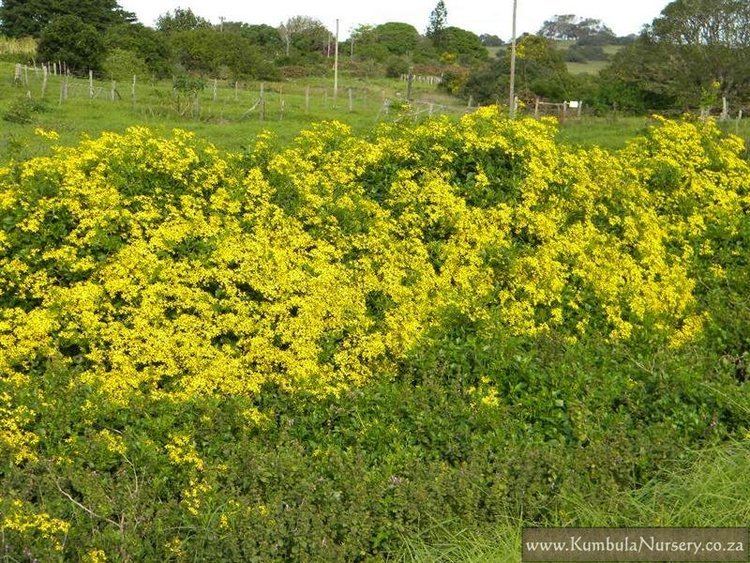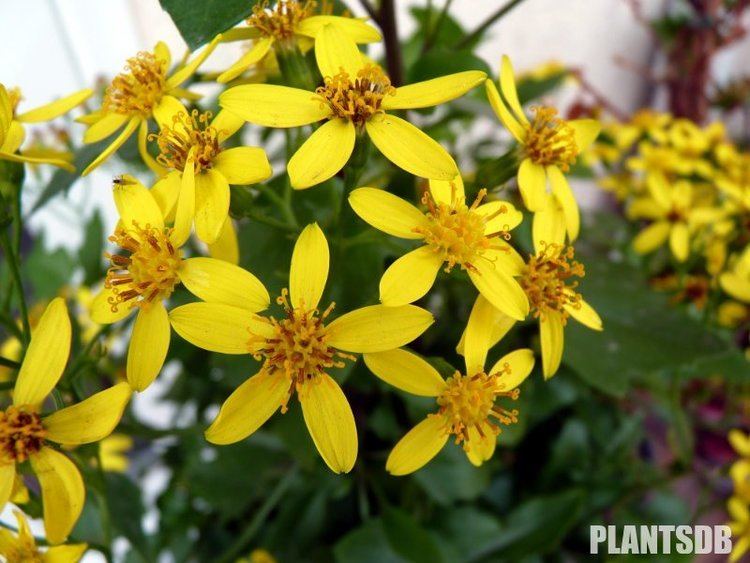Rank Species | Tribe Senecioneae Scientific name Senecio tamoides | |
 | ||
Similar Senecio elegans, Senecio angulatus, Senecio patagonicus, Senecio pseudoarnica, Senecio pyrenaicus | ||
senecio tamoides
Senecio tamoides or also known as Canary creeper (a name it shares with Senecio deltoideus Less.) is a climbing member of the genus Senecio of the family Asteraceae.
Contents
- senecio tamoides
- Senecio hiedra senecio tamoides plantas ornamentales
- Description
- Distribution
- References

Senecio hiedra senecio tamoides plantas ornamentales
Description
Scrambling mostly evergreen perennial, creeping along the ground or climbing several meters into the trees.
Stems and leaves: Stems are slender and hairless, up to 2 metres (6.6 ft) tall.

Leaves are bright green, shaped like many ivy with broad, oval and fleshy surfaces, 4 centimetres (1.6 in) long and 7 centimetres (2.8 in) wide, coarsely toothed edges, leaf stalks 2 centimetres (0.79 in) to 5 centimetres (2.0 in) long.

Flowers: Inflorescence is many-headed, bright yellow, and the flowering spike grows to have a flat top. The flower heads are cylindrical, about 3 millimetres (0.12 in) in diameter; surrounded with a whorl of five to seven bracts, 6 millimetres (0.24 in) to 7 millimetres (0.28 in) long which are surrounded by two to four smaller bracts or bracteoles. Three to six ray florets; each ligule approximately 1 centimetre (0.39 in) long; ten to twelve disc florets, 12 millimetres (0.47 in) to 15 millimetres (0.59 in) long.
When cultivated in the gardens of the National Museums of Kenya, it has orange florets.

Fruits and reproduction: Achenes about 2 millimetres (0.079 in) long, and not hairy; pappus 6 millimetres (0.24 in) to 7 millimetres (0.28 in) long. It grows easily from stem cuttings.
Distribution

It is native to Southern Africa where it occurs from the Eastern Cape to eastern Zimbabwe. It grows along evergreen forest margins at altitudes of 300 metres (980 ft) to 1,900 metres (6,200 ft) and in moist gullies.
